Review of Xiaomi Redmi 3 and updated version 3 s
The company Xiaomi, rapidly burst onto the Russian market, at the end of 2017, entered the top three in the sale of smartphones. The company's products attract the Russians with an excellent combination of quality, technical capabilities and price. Xiaomi Redmi series smartphones (translated as “Red rice”) are already being released in the third generation. The metal case and an impressive battery have attracted great attention of consumers who prefer the quality and reliability of the prestige of the brand. About smartphones Xiaomi Redmi 3 / 3S say that they are created according to the list of requests and wishes.
Content
Specifications
Specifications Xiaomi Redmi 3 and its updated version of the smartphone Xiaomi Redmi 3 S are similar. However, the insignificant differences give a different assessment of the performance of the phones.Let us consider in detail the characteristics of these two popular state employees.

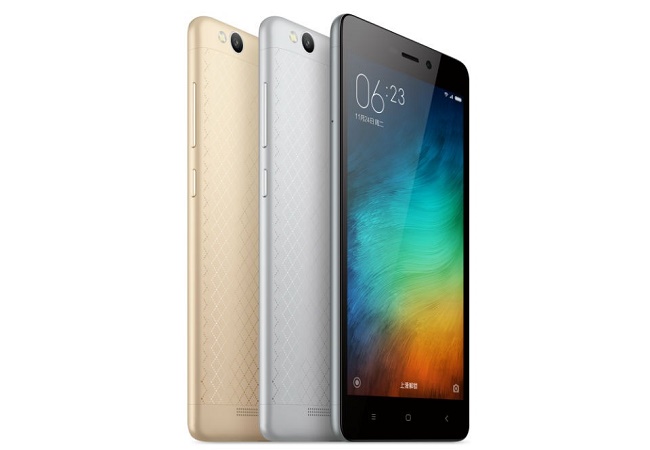
Xiaomi Redmi 3 smartphone
As you can see, the main characteristics of these two models are not significantly different. This can be explained by the fact that the 3s came out not as a fundamentally new model, but as an updated, taking into account the market demand, the Redmi 3 smartphone. The developers have improved the older model somewhat, and for some users these improvements may seem significant.
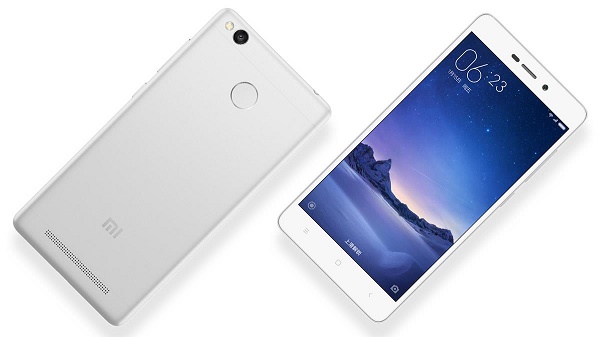
Xiaomi Redmi 3s Smartphone
Body, materials and ergonomics
Both models are made of magnesium alloy with aluminum cap. The two caps, top and bottom, are made of plastic, as well as the bezel. The front surface is protected by tempered glass with a grease repellent coating. Xiaomi Redmi 3 was presented in silver, gray and gold. In the coloring there is a pattern in the form of rhombuses. Also, one option is provided in pure gold color. In the case of Xiaomi Redmi 3 s, the creators abandoned the patterns due to reduced demand.
Important! The main difference between Xiaomi Redmi 3 s and the basic version is that a sensor has appeared on the case for unlocking with a fingerprint. In addition, the phone Xiaomi Redmi 3 was a drawback - the lid of the SIM card tray was dangling. In the new version this defect is eliminated.
Fingerprint sensor on the phone Xiaomi Redmi 3 s is located on the back of the case. On the one hand, unlocking the device at this location is convenient, holding it in your hand. On the other hand, if the phone is on the surface, you will need to take it in your hand.
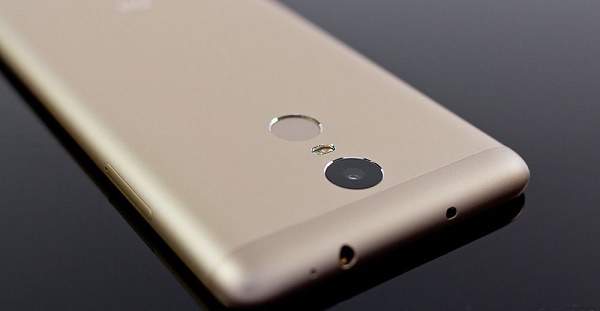
The weight and dimensions of the S3 have not changed. Both models fit comfortably in the hand; using the second hand to control is not required. Screen - HD, with a diagonal of 5 inches. Grainy imagethat is imperceptible from the distance of the outstretched hand. Reduced image quality is compensated by increased energy intensity, which will be discussed separately. There is a brightness indicator and anti-glare filter that provides good visibility of the image in sunny weather. there is automatic backlight adjustment. The case of the Redmi 3 smartphone even under heavy loads almost does not heat up.
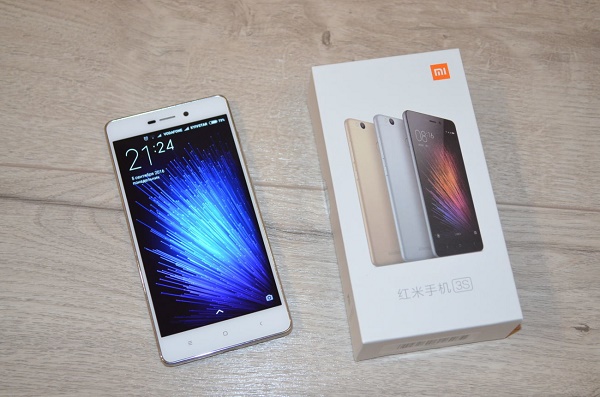
Hardware and performance
Redmi Smartphone 3 has an eight-core Qualcomm Snapdragon 616 processor with 4 cores Cortex A-53 at 1.5 GHz and 4 cores Cortex A-53 at 1.2 GHz, the Adreno 405 video accelerator is responsible for the graphics memory and 2 GB of integrated memory increase to 129 GB (there is a slot for microSD).
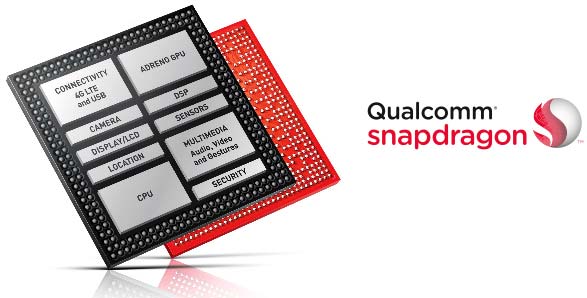
CPU Redmi 3 s smartphone - Qualcomm Snapdragon 430 MSM8937 for 4 cores 1.4 GGCortex-A53 + 4 cores 1.1 GHz Cortex-A53. This model is available in two types - with 16 GB and 32 GB of internal memory. In the version with 16 GB of memory, the developers retained the RAM in 2 GB, and in 32 GB of internal memory - 3 GB. The graphic amplifier in this case is used Adreno 505.
All these characteristics are considered average, but synthetic benchmark measurements showed very good results:
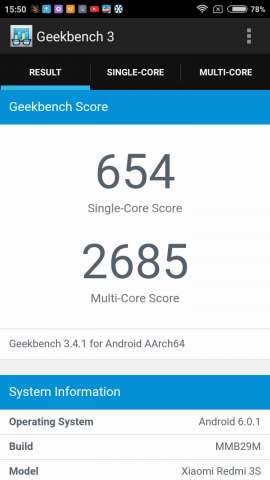

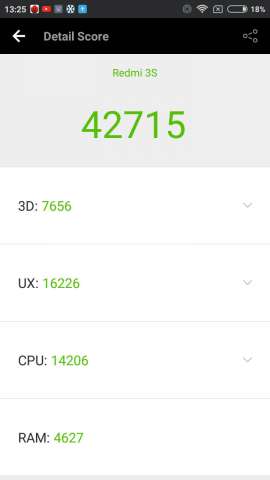
In practice, in everyday use, both devices show a stable speed.
User opinions diverge: some reviews of Xiaomi Redmi 3 s when testing found the performance of the upgrade model even lower than the performance of its predecessor. General practical indicators are as follows: simple games run without any problems, small problems or blurring of graphics are observed on medium ones, heavy games are installed with minimal graphic settings.
Both models work on Android 6.0 operating system with MIUI shell. The first phone has version 7 installed, and the second has 8 or 7.5.MIUI is very similar in style to iOS. It is noteworthy that the international firmware is installed on 3 s. The first version of the line was Chinese.
Communication and wireless capabilities
Redmi Devices work in LTE networks, in the frequencies B1, B3, B7, B38, B39, B40 and B41. Three of the bands are supported in Russia, so the device can connect to almost any tower.
Both models support work with two sim cards, not only when addressing a call, but also in the event that one of the SIM cards does not work. In this case, a redirection from a blocked SIM to a working one occurs. The slot is designed for two SIM cards of micro format, but instead of the second SIM card, you can insert a memory card.
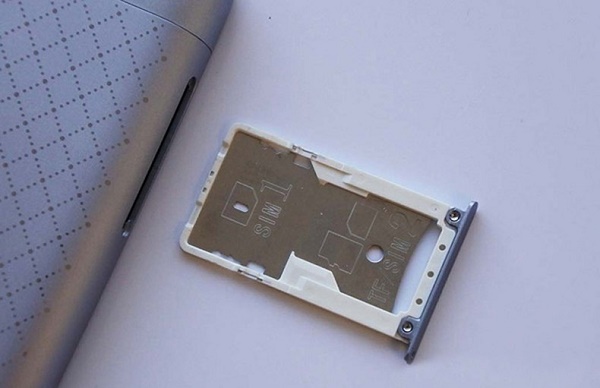
In addition, the phone supports Bluetooth 4.1, Wi-Fi and has an infrared port for controlling home appliances. Missing NFC. USB 2.0, supported by OTG. Satellite navigation support by GPS / GLONASS / BeiDou.
Battery power
Both models are equipped with non-removable lithium-polymer batteries for 4 100 mAh h. The monumental battery is one of the main advantages of budget smartphones of the Redmi line. Numerous field tests by users have shown that, on average, a battery in a quiet working mode can live for 3 days, with intensive use - 2 days. In the active game mode, the phone worked for 8 hours without additional charging. Phones in this line show one of the highest levels of autonomy among phones on the Android system.
Shooting quality
The camera in both versions of the phone is the same. The main one is 13 MP and the front camera is 5 MP. With good lighting the photo is pretty high quality, clear, with natural color reproduction and a high level of detail.


With insufficient natural light (at dusk, in cloudy weather) the camera also shows good results:

At insufficient artificial light (in the twilight of the room or in the light of the night city) the camera produces a slightly worse picture:

Front-camera will make a decent selfie for social networks, although fans find the quality is average.

The main camera allows you to shoot FullHD video quality at a speed of 30 fps. In this case, the sound is recorded in stereo format. It is possible to shoot and timeless silent. Video from the front camera allows you to make household videos or talk on Skype.
Sound, speakers and microphones
The speaker on these models is located at the bottom, on the back of the case. The sound is quite clear and has the ability to a large volume range.With headphones and portable speakers, the device interacts perfectly.
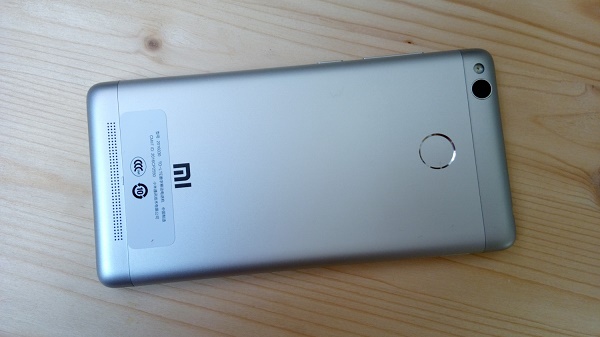
Important! Connoisseurs of music note the absence of low frequencies in the headphones and when recording voice, which ultimately sounds somewhat squeaky. The microphone also raises questions due to insufficient sensitivity.
findings
So, we list the main differences of the updated version.
- Set to 3 s for a more powerful graphics amplifier. For those who like to play "weighty games", it is better to choose the model 3 S in the version with 32 GB of memory.
- The updated model has a fingerprint scanner and eliminated some shortcomings.
- Version 3S installs international firmware.
- Having kept the colors (pink gold, dark gray and silver), the creators abandoned the recognizable pattern in the form of rhombuses.
Both models came out in 2016 and immediately caused a storm of rave reviews. “Gold that glitters”, “the best state employee”, “compact survivor” - as soon as the users did not call Xiaomi devices. The price at that time ranged from 9,000 to 11,000 rubles, and the opportunity to purchase a smartphone with flagship characteristics for this money inspired many customers. Let's compare the pros and cons of the models presented.

- high performance for this category;
- high level of autonomy;
- convenient display calibration
- confident signal reception wherever there are towers;
- high quality materials and assembly;
- good camera for this price segment;
- good quality speakers, the ability to connect any type of headphones.
- combined slot for memory card and SIM card;
- non-separable case;
- non-removable battery;
- quiet microphones;
- lack of official technical support and service in the territory of the Russian Federation.
Despite a number of drawbacks during the years of its release, the Xiaomi Redmi models were hit sales and were considered almost an indicator of the optimal gadget in the price-performance ratio. Today, the models described above are not offered on the company's official website. The company stamps new products like hot cakes, sensitively responding to the needs of the market and improving its models. Therefore, in ordinary mobile equipment stores it is possible to buy your favorite Redmi 3 and 3 s at a reduced price.

/rating_off.png)











